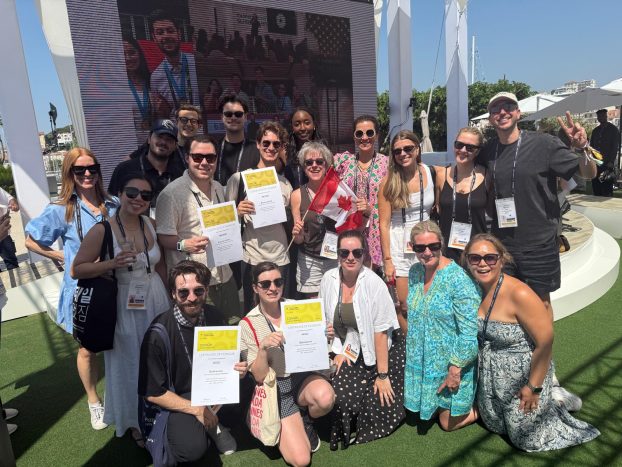In recent months, both Campbell Soup Company and Kellogg Canada have been compelled to discontinue educational programs running in Quebec schools. Both companies had, unwittingly, contravened provincial legislation on advertising to children. Quebec’s regulations in this area are especially stringent, and have tripped up more than a few advertisers in the past. For this report, Strategy asked youth marketing experts Nathalie Rivard, president and founder of Caktus Communications (www.caktus.com), and Pascale LeBlanc, president of Youthopia Communications (www. youthopia.com), to offer a guide to understanding the legislation.
In Quebec, advertising to children under 13 is a challenging proposition. Given the controversy generated recently by the Campbell Soup and Kellogg school programs, many marketers are probably wondering how they can avoid running into similar difficulties.
There are two pieces of legislation to consider in this context. The first: Sections 248 and 249 of Quebec’s Consumer Protection Act, which deal with all issues related to advertising aimed at kids under 13. The second: La loi sur l’instruction publique, which deals specifically with in-school sponsorship and advertising.
The intent of this legislation? To protect children in Quebec by prohibiting advertising aimed at them.
Some history: In May 1980, the provincial government responded to abuses on the part of advertisers by creating Quebec’s Consumer Protection Act, as well as a new body responsible for enforcing that law – the Consumer Protection Office.
How do you determine whether an advertisement complies with the law? According to Section 249, the context must be taken into account – in particular, the nature and intended purpose of the goods advertised, the manner in which the advertisement is presented, and the time and place where it is shown.
Obviously, oversights can happen. There are, however, information resources designed to help marketers familiarize themselves with the obligations created by the government ban on advertising to children. The Application Guide for Sections 248 and 249 (Advertising Intended for Children Under 13 Years of Age) – which explains what the law means and how, in practical terms, it should be interpreted – is particularly helpful.
The ban on advertising to children covers all media. While the Internet and other forms of interactive media were not in widespread use when the Act was introduced and are not mentioned specifically in the wording, the Consumer Protection Office considers them to be covered by both the spirit and the letter of the law – and is now looking at including new media explicitly within the legislation.
Is there a possibility that your commercial message could be deemed impermissible? Much depends, obviously, on the nature of the product or service. Is it something that is intended exclusively for children, or that has a marked appeal for them? Is it a family product that children may use? If you answer "yes" to these questions, then you would be well advised to consult the Application Guide, or a lawyer specializing in advertising law.
Robert Legault, a partner with Montreal law firm Legault-Joly (www.legault-joly.com) is one such specialist. His advice for advertisers trying to stay on the right side of the law? Direct the content of your ads to both parents and children, and avoid making it too appealing to children. (In the case of a cereal brand, for example, this might mean concentrating on issues such as nutritional value and health impact.)
Another important factor is where and when the advertising appears. Television commercials directed mainly at children may only be broadcast in programs for which children make up less than 5% of the audience. Commercials directed partly at children may only be broadcast in programs for which children make up less than 15% of the audience. Commercials for family-oriented products such as shampoo, toothpaste and skin cleansers, as well as certain cereals, desserts and games, are considered to have no appeal for children.
Advertising to children is exempted from the law if it is published in a magazine or an insert – provided that this editorial product is sold (rather than given away) and is issued at intervals of no more than three months. (The idea here is to prevent an advertiser from producing an annual "magazine" to promote its products during, say, the Christmas season.)
Certain exemptions apply to advertisements that promote a program or show directed at the children’s market. Non-commercial advertising, in the form of educational or public service messages, is also allowed. In such cases, however, it is important to consult the Application Guide to determine whether your advertising fits the relevant definitions.
Advertisers sponsoring in-school programs, meanwhile, face a whole different set of issues. If you are considering such an initiative, be sure that you understand all the implications of the Loi sur l’instruction publique. Kellogg and Campbell Soup were pressured by parents and the media to drop their programs because they ran counter to the provisions of the legislation, which prohibits commercial solicitation in Quebec schools. In both cases, the programs were said to be encouraging purchase by calling on youngsters to bring in UPC symbols – an absolute no-no under the regulations.
For those advertisers seeking a better understanding of the current legislation, the Quebec Ministry of Education has published a free brochure, which is available online at www.meq.gouv.qc.ca/publications/publicit/m_inter.htm.
Agencies working in Quebec with advertisers from the U.S. or other provinces should make a point of informing their clients about the legislation and its implications. Obviously, the best way for an advertiser to position its brand successfully and steer clear of the pitfalls is to respect the law. If you don’t have a copy of the Application Guide, get one. More information on Quebec’s Consumer Protection Act and its regulations can also be found by visiting the Web site of the Consumer Protection Office, at www.opc.gouv.qc.ca.
Also in this report:
– Those cool Chupa Chicks: Chupa Chups’ grassroots efforts to lick Canada has edgy scooter girls taking to the streets and talking up the club crowd p.B2
– Labatt employs dry humour: Moderation campaign relies on insights from student target p.B4
– Dentyne Ice locks lips with youth target: Has built ongoing campaign on theme of anticipating first kiss p.B14
– Grads more valuable than you know p.B15




























